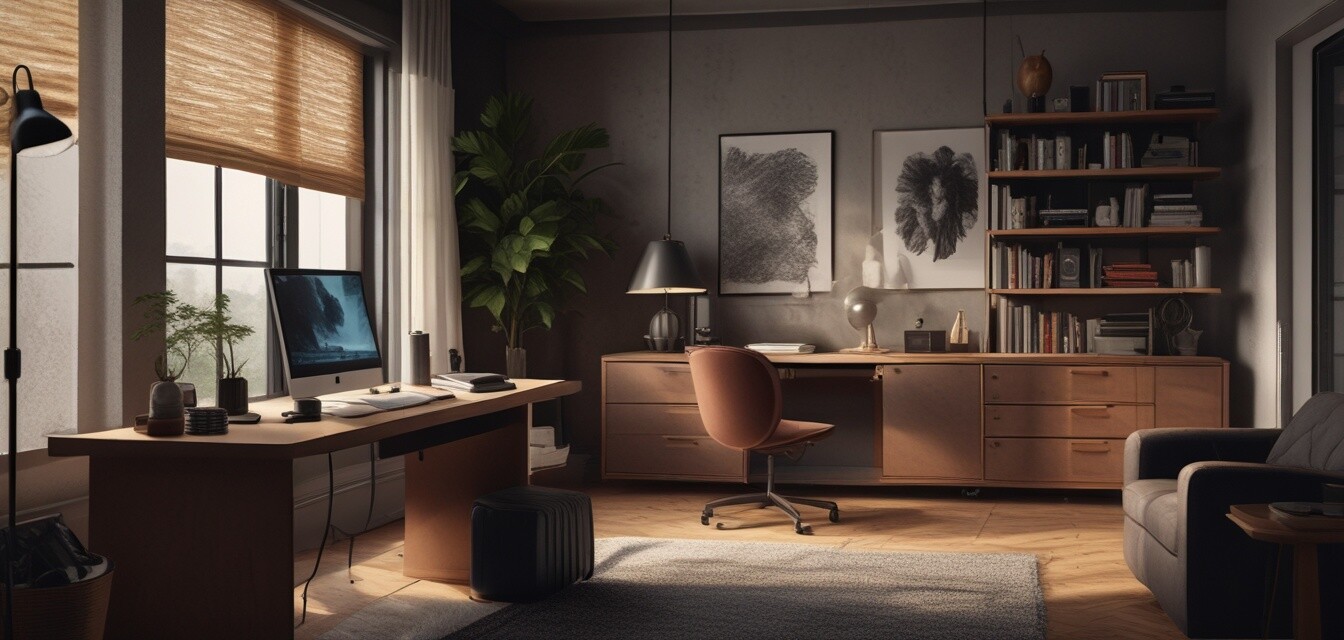
How to Use Textures to Enhance Your Home Office Design
Key Takeaways
- Incorporating textures adds depth and interest to your workspace.
- Textiles, wall finishes, and lighting play crucial roles in creating an inviting environment.
- Strategically layering different textures can enhance the aesthetic appeal of your office setup.
- Personal touches can make your workspace more enjoyable and reflective of your style.
Your home office is not just a place to work; it’s a reflection of your personality and creativity. By using various textures in your design, you can transform a plain setup into a dynamic and inviting space. This article will explore how different textures—ranging from textiles to wall finishes—can enhance your home office design.
The importance of texture in home office design
Textures are essential in creating a warm and inviting atmosphere. They can stimulate visual interest and appeal, making your workspace feel more engaging. Below are several reasons why you should incorporate textures into your home office:
- Visual appeal: Textures bring life to your design, breaking up monotony.
- Comfort: Soft textures can provide comfort and warmth, making your workspace more inviting.
- Personality: Textured elements can reflect your style, making the space uniquely yours.
Types of textures to consider
When designing your home office, consider the following types of textures:
| Texture Type | Description | Examples |
|---|---|---|
| Textiles | Soft materials that add warmth. | Cushions, rugs, curtains |
| Wood | Natural surface that adds richness. | Furniture, flooring, wall paneling |
| Metal | Provides a sleek and modern finish. | Lighting fixtures, furniture accents |
| Stone/Brick | Adds strength and earthiness. | Feature walls, shelves |
Incorporating textiles into your layout
Textiles are one of the easiest ways to add texture to your home office. Here are some tips on how to incorporate them effectively:
- Layering: Combine different fabrics like wool, cotton, and linen to create depth.
- Color coordination: Choose colors that complement your overall office theme.
- Accents: Use pillows or throws on chairs to add comfort and style.
"Texture is the song of the home; it creates a symphony that brings each element together in harmony." – Unknown
Using wall finishes to create depth
Wall textures are a powerful way to enhance your home office. Here are some ideas to consider:
- Paint finishes: Use matte or glossy finishes to create different visual effects.
- Wallpaper: Choose textured wallpaper to add dimension, such as grass cloth or embossed designs.
- Accent walls: Consider a feature wall using reclaimed wood, stone, or even a gallery of framed art for added visual interest.
Enhancing your office with lighting textures
Lighting is crucial in creating the right atmosphere. Here’s how to incorporate lighting textures in your home office:
- Layered lighting: Combine ambient, task, and accent lighting for a dynamic effect.
- Unique fixtures: Use textured lamps or light fixtures made of materials like glass, metal, or fabric.
- Natural light: If possible, maximize windows to bring in soft, natural light.
Tips for creating a cohesive design
Tips for beginners
- Start small: Introduce textures gradually through smaller pieces before committing to larger elements.
- Mix, but don’t match: Combine different textures for a balanced look without overwhelming the space.
- Seek inspiration: Look for ideas on platforms like Setup Inspiration to spark your creativity.
Conclusion
Incorporating textures into your home office design is an exciting way to enhance your workspace. By thinking creatively about textiles, wall finishes, and lighting, you can create a dynamic environment that not only looks great but also feels comfortable. Start small, experiment with layers, and remember that your workspace should express who you are. Transform your home office into a place where you feel motivated and inspired to work.
Pros
- Creates a warm and inviting workspace.
- Adds visual interest and depth.
- Reflects personal style and creativity.
Cons
- Too many textures can make a space feel chaotic.
- Some textures may require more maintenance.